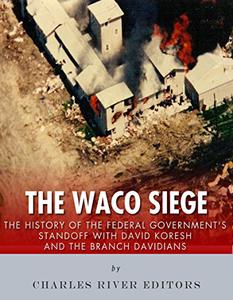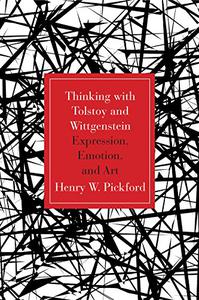 The Waco Siege: The History of the Federal Government's Standoff with David Koresh and the Branch Davidians by Charles River Editors
The Waco Siege: The History of the Federal Government's Standoff with David Koresh and the Branch Davidians by Charles River EditorsEnglish | August 28, 2015 | ISBN: 1517085853 | 54 pages | EPUB | 1.83 Mb
*Includes pictures *Includes accounts of the standoff by federal agents and members of the Branch Davidians *Includes online resources and a bibliography for further reading *Includes a table of contents "If you are a Branch Davidian, Christ lives on a threadbare piece of land 10 miles east of here called Mount Carmel. He has dimples, claims a ninth-grade education, married his legal wife when she was 14, enjoys a beer now and then, plays a mean guitar, reportedly packs a 9mm Glock and keeps an arsenal of military assault rifles, and willingly admits that he is a sinner without equal." - The opening passage of "The Sinful Messiah", published in the Waco Tribune-Herald on February 27, 1993 In February 1993, President Bill Clinton had only been in office for a few weeks when one of the most important events of his presidency began to take shape. Ironically, it would involve a group that the vast majority of Americans had never heard of and knew absolutely nothing about. The Branch Davidians were an obscure religious sect located in Texas, but members of the group led by David Koresh in Waco, Texas stockpiled enough weaponry to catch the attention of the federal government. The U.S. Bureau of Alcohol, Tobacco, Firearms and Explosives (ATF) ultimately decided to serve arrest and search warrants at the compound for the possession of illegal weapons, even though they fully expected it would require a raid that could potentially turn fatal. The ATF hoped to use the element of surprise when it commenced the raid on February 28, but the Branch Davidians were ready for them, which led to an intense firefight between the two sides that resulted in the deaths of 4 ATF agents and a number of Branch Davidians. With that, the FBI got involved, and federal agents settled in for a standoff that would last about 50 days, trying everything from negotiating to using sleep deprivation tactics to coerce the Branch Davidians into ending the confrontation. Finally, on April 19, government agents breached the compound's walls and tried to use gas to flush the Branch Davidians out peacefully, but a series of fires broke out and quickly spread, killing the vast majority of the occupants inside, including many young children. Naturally, controversy spread over how the siege ended; for example, while most believe the Branch Davidians intentionally started the fires as part of a mass suicide, others insist it was the fault of the ATF. Debate also raged over whether the government could have and should have made different decisions to defuse the situation. No matter which side people came down on, the violent confrontation embarrassed government officials, and Dick Morris, an advisor of Clinton's, even claimed that Attorney General Janet Reno only kept her job after Waco by threatening to pin the blame on the president: "[H]e went into a meeting with her, and he told me that she begged and pleaded, saying that . . . she didn't want to be fired because if she were fired it would look like he was firing her over Waco. And I knew that what that meant was that she would tell the truth about what happened in Waco. Now, to be fair, that's my supposition. I don't know what went on in Waco, but that was the cause. But I do know that she told him that if you fire me, I'm going to talk about Waco." In addition to influencing how the government approached potential future conflicts with other groups, Waco's most important legacy was that it enraged people who already had an anti-government bent. The most notable, of course, was Timothy McVeigh, who conducted what was at the time the deadliest terrorist attack in American history in Oklahoma City on the second anniversary of the final confrontation at Waco. The Waco Siege: The History of the Federal Government's Standoff with David Koresh and the Branch Davidians chronicles the controversial event and the influence it had.



![S.T.A.L.K.E.R. 2 / STALKER 2: Heart of Chornobyl - Ultimate Edition (2024) [+UPDATE 23.12.2024 - v1.1.3] ElAmigos / Polska wersja językowa](https://i.postimg.cc/Zqd8RWGY/UZG8PBE.jpg)



















































![David Gilmour - Luck and Strange (2024) [FLAC]](https://i.imgur.com/everaBc.jpeg)
![Męskie Granie Orkiestra - Męskie Granie 2024 (2024) [FLAC]](https://i.imgur.com/FAyOxrM.jpeg)
![The Rolling Stones - Hackney Diamonds (2023) [FLAC]](https://i.imgur.com/wCkyyUN.jpg)
![Lady Gaga - Harlequin (2024) [FLAC]](https://i.imgur.com/dcgIA8D.jpeg)
![Natalia Kukulska - Dobrostan (2024) [FLAC]](https://i.imgur.com/bdljG3O.jpeg)
![Kaśka Sochacka - Ta druga (2024) [FLAC]](https://i.imgur.com/hORQKvn.jpeg)
![Kuba Sienkiewicz - Pani Bóg (2024) [FLAC]](https://i.imgur.com/qijCx8Z.jpeg)
![Lanberry - Heca (2024) [FLAC]](https://i.imgur.com/8P7QfeR.jpeg)
![Sara James - PLAYHOUSE (2024) [FLAC]](https://i.imgur.com/m4f8OKg.jpeg)
![Grzegorz Hyży - EPILOG (2024) [FLAC]](https://i.imgur.com/8DA2sBr.jpeg)
![Myslovitz - WIECZORAMI CHŁOPCY WYCHODZĄ NA ULICE (2024) [FLAC]](https://i.imgur.com/l9mMtIG.jpeg)
![Krzysztof Zalewski - ZGŁOWY (2024) [FLAC]](https://i.imgur.com/vh48RAc.jpeg)
![Krzysztof Cugowski - Wiek to tylko liczba (2024) [FLAC]](https://i.imgur.com/SBzgqe2.jpeg)
![Nosowska - Kasia i Błażej (2024) [FLAC]](https://i.imgur.com/mObvVXQ.jpeg)
![sanah - Pianinkowe Kaprysy (2024) [FLAC]](https://i.imgur.com/pVjjPAa.jpeg)
![Kwiat Jabłoni - Pokaz slajdów (2023) [FLAC]](https://i.imgur.com/diERHfZ.jpg)
![Robert Cichy - Spacer po Warszawie (2024) [FLAC]](https://i.imgur.com/ixleU9o.jpeg)
![Viki Gabor - Terminal 3 (2024) [FLAC]](https://i.imgur.com/Q1KCnDs.jpeg)
![Sanah - Kaprysy (2024) [FLAC]](https://i.imgur.com/71OZm4h.jpeg)
![Męskie Granie Orkiestra - Męskie Granie 2023 (2023) [FLAC]](https://i.imgur.com/U4YHo8d.jpg)




